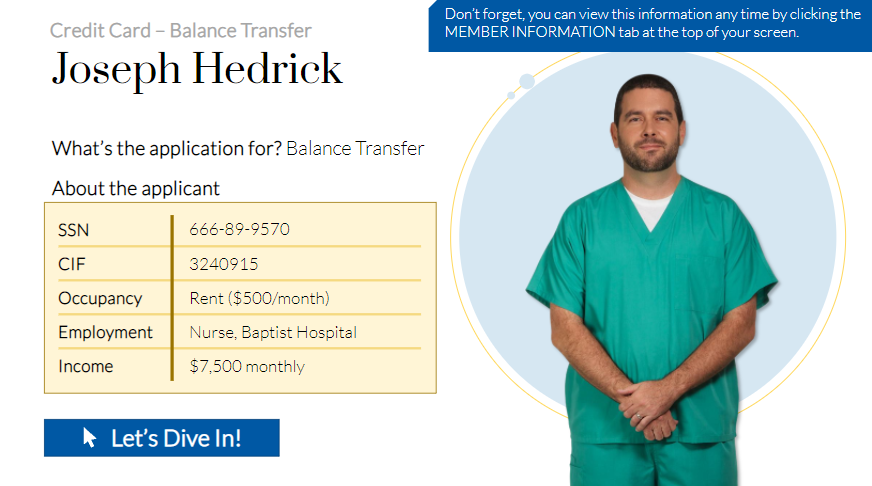Scalable Learning Journey
Software Training
Situation
The company is launching a new loan origination system and needs to train existing employees. Employees have previously received training on relevant policies, procedures, and products. There is limited training staff capacity to deliver instructor-led training. The new system will be implemented in branches on a rolling basis, calling for training delivery at varying times and locations. There is a scalability issue.
Task
Develop a training plan and subsequently a full learning journey that allows existing employees an opportunity to learn and engage with the new system.
Action
Once the request was made and a timeline had been established, I met with subject matter experts (SMEs) to determine if asynchronous or synchronous learning was more suitable. The company usually focuses on instructor-led training. However, given the scalability concerns and limited time for rollout, I determined that asynchronous e-learning was the best option.
I took advantage of existing employee knowledge and focused using the system. I worked with SMEs to create realistic scenarios for the most common transactions. I converted these scenarios into interactive screen recordings that allowed learners to simulate experience within the system. The resulting learning experience was truly task-based.
Intentional Repetition
The focus was on a consistent procedure. Training was structured so there were fewer and fewer prompts each time while learners performed repetitive tasks.
Spaced Learning
Employees were encouraged to take the micro-learning in spaced internals over three weeks before the system launched.
Result
Employees reported feeling prepared upon system launch and found that they were comfortable performing transactions. This was largely due to the realism of the scenarios and the opportunity to practice the tasks in a risk-free environment before system launch.
System adoption in branches has gone smoothly. After the first few branches completed training and began work in the new system, additional job aids were created to assist with recall and accuracy.
-

Responsibilities
Instructional design, e-learning development, project management
-

Audience
Existing front-office employees
-

Development Tools
Storyline, PowerPoint, specific loan origination system
Design Rationale
I believe in having intention for every design decision. This section explains why I made the choices I did and the science behind those decisions.
-
The two principles most emphasized in this course were: adult learner experience and problem-centered learning. I conducted a thorough analysis (SME interviews and previous training review) to ensure we eliminated extraneous materials and demonstrated respect for employees’ existing knowledge and experience. This led to the decision to leave out policy and product information, instead offering links to existing resources if a refresher was needed. Employees were able to drive this part of their own learning.
Scenarios were designed to offer realistic situations in which employees drew direct connections between the content and their daily jobs.
-
Given that the learning emphasized performing steps in a specific process, the course was created using strategies associated with the behaviorist theory of learning. Courses were structured from the most simplistic to most complex scenarios, with scenario-specific objectives focused on building employee skills as they progressed. I used a show-tell-do method when designing this course.
The simulation environment required employees to respond to prompts which decreased with the more experience they gained. The content was reinforced as steps repeated throughout scenarios.
-
To help transition information from training to application (long-term memory), I implemented two deliberate practice techniques: spaced practice and retrieval practice. Learners who followed the recommended training plan (spacing their engagement) found it must easier to adapt to the new system than did those who took the training all at once or not at all.
The spacing also relied on retrieval practice by decreasing the prompts the learner received as they progressed through the trainings, requiring learners to pull previous knowledge from their memory.





